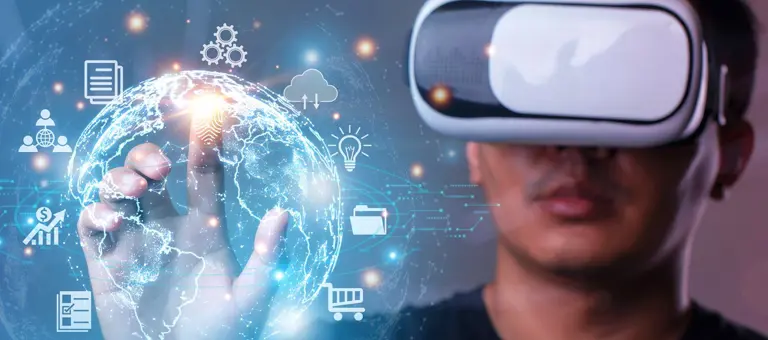
Glossary of Web 3 terms and acronyms
25 October 2022
The Web 3 world is filled with jargon. To help you to navigate this space, we’ve gathered some of the key terms and their high-level meaning.
Bitcoin
The very first decentralised, peer-to-peer, digital currency, created by the pseudonymous Satoshi Nakamoto in 2009.
Blockchain
A blockchain is a distributed database that is shared among the nodes of a computer network. Blockchains store a continuously growing historical ledger of information, for example, accounts and transactions, into blocks.
Central bank digital currencies (CBDC)
CBDCs are currency produced by a central bank in a digital format. They can be underpinned and transacted on distributed ledger technology (DLT).
Cryptocurrency
A digital asset used as a medium of exchange. Cryptocurrencies are borderless, secure, and maintained by blockchains as opposed to centralised banks or governments.
Decentralised finance (DeFi)
The ecosystem of borderless, trustless, peer-to-peer financial tools built on public blockchains without the use of banks. DeFi apps are built to be open and interconnected, allowing them to be used in conjunction with one another.
Digital assets
This includes: fungible tokens (cryptocurrencies), stablecoins, non-fungible tokens (NFTs) and central bank digital currencies (CBDC).
Digital Wallet
A software application or hardware device used to store private keys to blockchain assets and accounts. A blockchain wallet does not actually store the coins or tokens themselves but instead, they store the private key which proves ownership of the specific digital asset.
DAO (Decentralised Autonomous Organisation)
An organisation based on open-source code and governed by its users. DAOs focus on a specific project or mission and trade the traditional hierarchical systems of legacy corporations for guidelines written on the blockchain.
Ethereum
A public blockchain that serves as the foundation for decentralised applications. Ethereum allows users to write and deploy complex, self-executing smart contracts which live on the blockchain.
NFTs (Non-fungible token)
A digital certificate used to assign and verify ownership of a unique digital or physical asset. NFTs are not interchangeable. Examples include property, art, event tickets, governance rights, company shares.
Metaverse
An emergent online space with digitally persistent environments that people inhabit, as avatars, for synchronous interactions and experiences, accessing the shared virtual space through virtual reality, augmented reality, game consoles, mobile devices, or conventional computers.
Stablecoin
A token with its value attached to another asset. Stablecoins are usually backed by a fiat currency, like the US dollar, but can also be pinned to physical assets like precious metals, or other cryptocurrencies like Bitcoin.
Smart contracts
Self-executing code deployed on a blockchain which allow transactions to be made without an intermediary figure and without the parties involved having to trust one another.
Web 3 organisation
Companies that start digital asset businesses, such as bitcoin miners, stablecoin issuers, DeFi platform providers, including decentralised autonomous organisations.
Web 1
The earliest version of the internet as the read-only web, with static pages that people could visit, but not interact with. Web 1 was named after the concept of Web 2 was developed.
Web 2
The modern version of the world wide web. Web 2 is the social web, which is driven by user-generated content.
Web 2 websites are dynamic and interactive. People can create accounts or see content specifically intended for them. Most websites would fit under Web 2.
Related Insights

The role of regulators in accelerating Web 3 innovation
Financial institutions are seeing the potential that Web 3 technologies can offer but need the regulatory guard rails to have the confidence to commit.
Read more
Solving the KYC dilemma with Web 3
DLT has great potential to optimise Know Your Customer. We unpack the issues in KYC for retail and corporate banks and evaluate the application of DLT.
Read more
Blockchain opportunities for treasury – disruptive solutions or additional risks?
We take a look at how Web 3 is impacting investment banks, specifically bond issuance, intraday liquidity and in OTC derivatives.
Read more
Why NFTs are here to stay
What is a non-fungible token (NFT)? How will they impact the banking industry, and are they here to stay? In this article, we will dig into these questions.
Read moreIs digital and AI delivering what your business needs?
Digital and AI can solve your toughest challenges and elevate your business performance. But success isn’t always straightforward. Where can you unlock opportunity? And what does it take to set the foundation for lasting success?